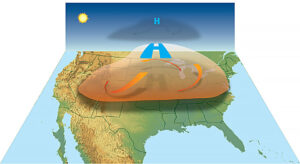In recent years, electricity costs have skyrocketed and I am going to tell you how to calculate how much electricity you are using, how much it is costing you, and finally, how to reduce those costs.
Most people have no idea how much electricity their electronic devices and electrical appliances consume. Believe it or not, the energy cost can exceed the original cost of the equipment within only a year.
How to calculate energy consumption
The standard unit of electrical power is the watt. The watt is a unit of measurement of the rate of energy transfer over a unit of time. One watt is the equivalent of one joule (J) per second: W = J/s. A Kilowatt is equal to 1,000 watts.
The electric company charges you per kilowatt-hour, now here’s where things get a little tricky:
A kilowatt-hour, represented by kWh, is a measurement of how much energy you consume.
But this is not the same as measuring how many kilowatts your devices consume per hour, due to the fact that energy and power are not the same. A kilowatt-hour measures the amount of time, or the amount of energy, it takes to use one kilowatt of power.
Kilowatt = power, which is the rate that energy is generated or used.
Kilowatt-Hour = energy, which is the rate that you use an energy source over a specified amount of time.
If you want to convert watts into kilowatt-hours In order to calculate how much energy your device consumes each day, you need to convert watts into kilowatt-hours. To do so, you multiply the power consumption, measured in watts, by the number of hours the device is in use, then, simply divide that number by 1,000. Here is an example:
let us say you have an electric heater that consumes 1,200 watts of power, and it used for 3 hours, the formula would be: kWh = (1,200 × 3) ÷ 1,000; kWh = 3,600 ÷ 1,000; kWh = 3.6
Now, if you wish to calculate the wattage of your electric heater, based on its kilowatt-hours., you multiply its energy use in kWh by 1,000 to determine the consumption in watt-hours. The last step to determine the wattage is to divide that number by the number of hours you used the heater. The example is below:
watts = (kWh × 1,000) ÷ hrs; watts = (3.6 kWh × 1,000) ÷ 3 hrs; watts = 3,600 ÷ 3 hrs, therefore watts = 1200 W.
The Department of Energy lists two more ways to determine the wattage of your electronic 9r electrical device.
“The wattage of most appliances is usually stamped on the bottom or back of the appliance, or on its nameplate. The wattage listed is the maximum power drawn by the appliance. Many appliances have a range of settings, so the actual amount of power an appliance may consume depends on the setting being used. For example, a radio set at high volume uses more power than one set at low volume. A fan set at a higher speed uses more power than one set at a lower speed.
– Multiply the appliance ampere(standard unit of electrical current) usage by the appliance voltage usage
If the wattage is not listed on the appliance, you can still estimate it by finding the electrical current draw (in amperes) and multiplying that by the voltage used by the appliance. Most appliances in the United States use 120 volts. Larger appliances, such as clothes dryers and electric cook tops, use 240 volts. The amperes might be stamped on the unit in place of the wattage, or listed in the owner’s manual or specification sheet.”
How much are your devices costing you?
For this discussion, I will use the average OG&E rate of 12.38 cents per kWh. Bear in mind, OG&E has peak and off-peak rates during the summer months. The off-peak rate during summer is a mere fraction of the peak rate.
Here is the formula to calculate the hourly cost of your device:
I am going to use a 100 watt light bulb as the device. Energy (W) = (100W × 1Hr) ÷ 1,000; Energy = 100W ÷ 1,000 ; Energy = 0.1 kWh ; Hourly cost = electricity cost per kWh ÷ energy use in kWh= Hourly cost = $0.1238 ÷ 0.1 kWh, therefore Hourly cost = 1.238 cents.
To estimate your monthly costs, do the following calculations:
Estimate how many hours per day you use the 100W light bulb, then multiply the light bulb’s wattage by the number of hours you use in a day, (100 W × 12 hrs = 1,200 watts ÷ 1,000 = 1.2 kWh). Now, multiply OG&E’s average rate, by the light bulb’s daily kWh = $0.1238 × 1.2 kWh =14.856 cents per day. Now multiply your answer by 30 to get the monthly cost, therefore, $0.14586 cents x 30 days = $4.45.
If you want to shell out some hard cash, there are high-tech options to calculator usage in your house. Tech companies such as Neurio, Curb and Sense have products that can connect to your home’s breaker box and will analyze how much power each appliance is using, but will set you back several hundred dollars and will have to be installed by a licensed electrician. A much cheaper alternative is an electricity usage monitor with a built-in digital display, such as the Kill-A-Watt meter, that will measure the current draw of the device connected to it. Note that it only displays the amperage, and you will have to calculate with the formulas previously provided.
How to lower your electricity costs
The best way to reduce overall electricity costs is to make your home is well-insulated, and that your heating and cooling systems are both energy-efficient and operating at peak performance.
Another way to reduce electricity cost is to look for the energy star rating when purchasing electrical or electronic appliances. To earn an Energy Star rating, an appliance must meet strict energy efficiency criteria established by the US Environmental Protection Agency or the US Department of Energy.
You can use the formulas in this article to calculate how much each device is costing you.
Something that is typically overlooked is something called an energy vampire. This is a device such as a mobile phone charger or something on standby that is always on. It should be pointed out, however, this is where you save the least, somewhere between 5-20 percent of your total bill.
Another way to substantially save on your bill is to participate in your power company’s energy saving programs such OG&E’s in-home assessment, or their Smart Hours program.
From OG&E website:
“With SmartHours, you have control over your energy usage and bill. Shift your electricity use on weekdays between 2 and 7 p.m. from June 1 to September 30 and pay a lower price for electricity the other 19 hours, as well as on weekends, Juneteenth, Independence Day and Labor Day.
SmartHours puts you in complete control of your savings. You control your thermostat. You decide all your electricity use. Simple shifts such as pre-cooling your home before 2 p.m., keeping the doors and blinds closed, and delaying cooking or laundry until 7 p.m. can increase your savings.” part of the program involves installing a smart thermostat- which will be controlled remotely to help you comply with peak hour reductions.
For more information on Smart Hours and a plethora of other programs offered by OG&E, call 844-882-5746.
Hopefully the information in this article will help you to be a smarter electrical power consumer, and help you keep more of your hard-earned money.











